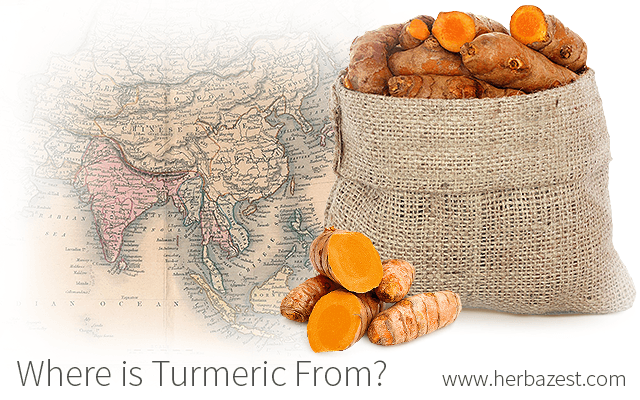Turmeric boasts over 6,000 years of history. Though its cultural and economic importance on the Indian subcontinent is unparalleled, it has amassed a significant following worldwide.
Turmeric started off as a medicinal plant and coloring agent. Over time, consumers developed new uses for the herb, including culinary and cosmetic applications. Although it is not clearly established where turmeric comes from, it is thought to be native to Southeast Asia, where various related species grow naturally in the wild.
Origin of Turmeric
The earliest known reference of turmeric is over 6,000 years old and can be found in the Atharvaveda Hindi scriptures, where it is prescribed as a treatment for leprosy and jaundice. It has also been noted in the Yajnavalkya Samhita circa 4050 BCE. These early evidences suggest widespread cultivation of turmeric in Ancient India.
Although several species related to turmeric are native to the country, very little botanical evidence actually supports the notion that true turmeric comes from India. Indeed, turmeric (Curcuma longa) has not been isolated in the Indian wild. Most of the earlier historical references to turmeric describe its domestication by humans. However, in 1280 CE, Italian explorer Marco Polo described turmeric as growing in the Fujian region of China, and the British surgeon Whitelaw Ainslie's 1826 account in Materia Indica claimed the existence of wild C. longa in present-day Vietnam.
Old records suggest that true turmeric likely came to India from ancient China or Vietnam after being transported by migrating populations, Buddhist monks, or other travelers. Ancient people used turmeric as a medicinal treatment for common skin and digestive ailments and also as a fabric dye. Over time, as its popularity spread throughout India, turmeric came to be introduced in cooking - perhaps for color and preservation.
Evolution of Turmeric
In India, where native species of Curcuma were bitter, the perfect marriage of flavor, color, and medicinal potential could be witnessed in C. longa. For this reason, it was highly favored above all other related species, and it soon developed the divine implications that have driven it to the center of many of the socio-religious beliefs that still exist today.
Through trade, commerce, exploration, and globalization, the use of turmeric has spread outward from Asia to other parts of the world. It is now extensively cultivated throughout the tropics, having reached east Africa as early as the 8th century, west Africa by the 13th century, and the Americas in the 18th century.
India remains as the largest producer, consumer, and exporter of turmeric. Turmeric production accounts for more than 20% of India's total spice production. In addition, India produces a staggering 600,000 metric tons of turmeric annually.1
Other major producers of turmeric include China, Bangladesh, Malaysia, Thailand, Cambodia, and the Philippines.
WITH A HIGH CONCENTRATION OF CURCUMIN, INDIAN TURMERIC IS SAID TO BE THE BEST IN THE WORLD.
Curcumin content has been a major target for many attempts at crop improvement, alongside better crop yield. However, the potential for turmeric improvement remains extremely limited, due to the plant's sterility. Some institutions, such as the Indian Institute of Spice Research, have started looking towards clonal selection, producing cultivars such as 'Suvarna', 'Prabha', 'Suguna', and 'Prathibba'.
After several decades of research, botanists are still trying to answer the question where does turmeric come from? Its humble beginnings are known to be rooted in the ancient medicinal traditions of China and India. Practical use and a touch of mysticism is what makes the turmeric root so valuable, even to this day.
Sources
- Materia Indica, p. 455
- The Agronomy and Economy of Turmeric and Ginger, The invaluable medicinal spice crops, p. 25
- Turmeric: The genus Curcuma, pp. 1-29
- Herbal Medicine, Biomolecular and Clinical Aspects, Chapter 13, Turmeric, the golden spice
- Kew Royal Botanic Gardens, Curcuma longa (turmeric)
Footnotes:
- Food and Agriculture Organization of the United Nations. (2004) Turmeric: Post-harvest Operations. Retrieved September 23, 2021, from: http://www.fao.org/fileadmin/user_upload/inpho/docs/Post_Harvest_Compendium_-_Turmeric.pdf




